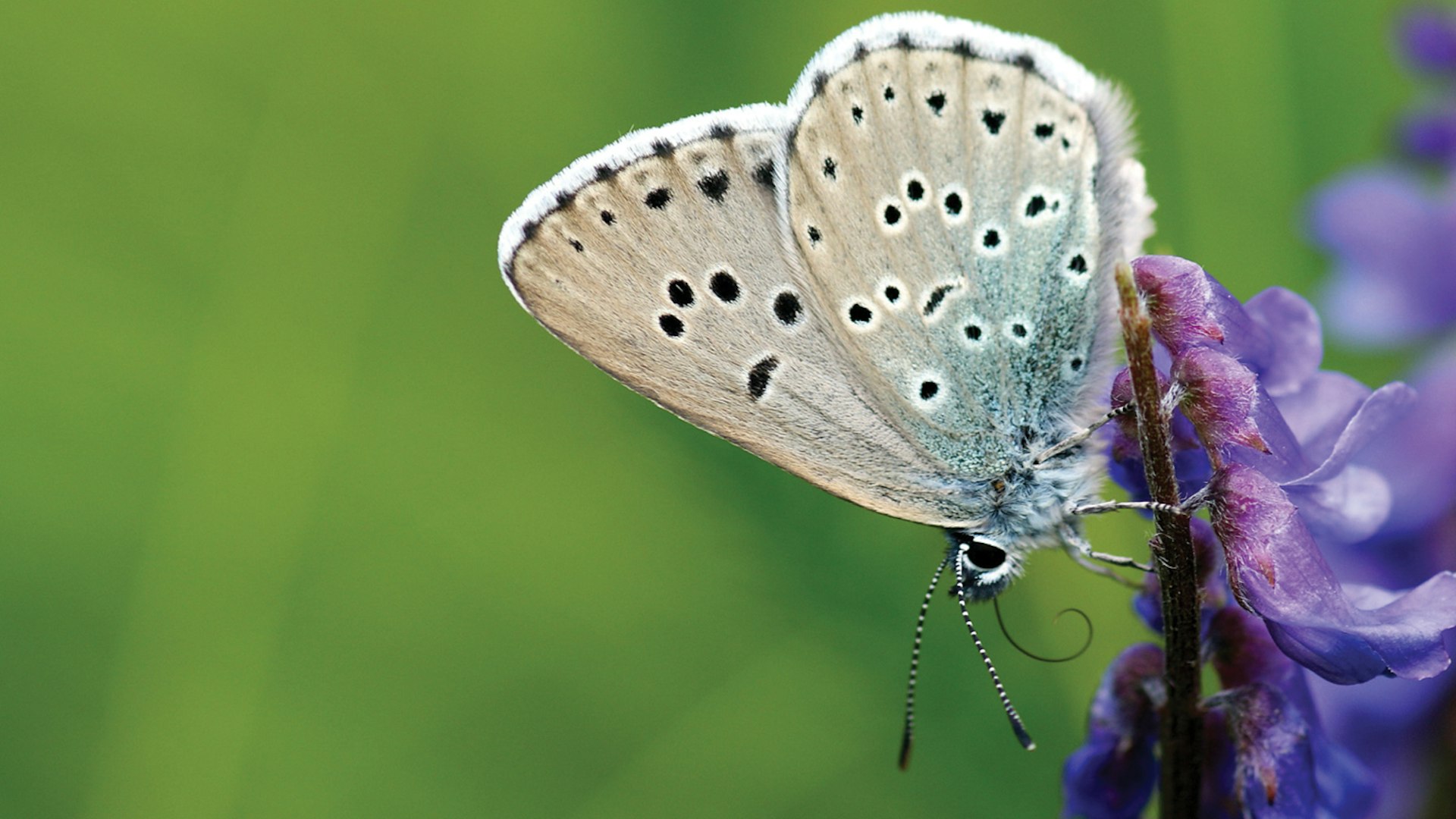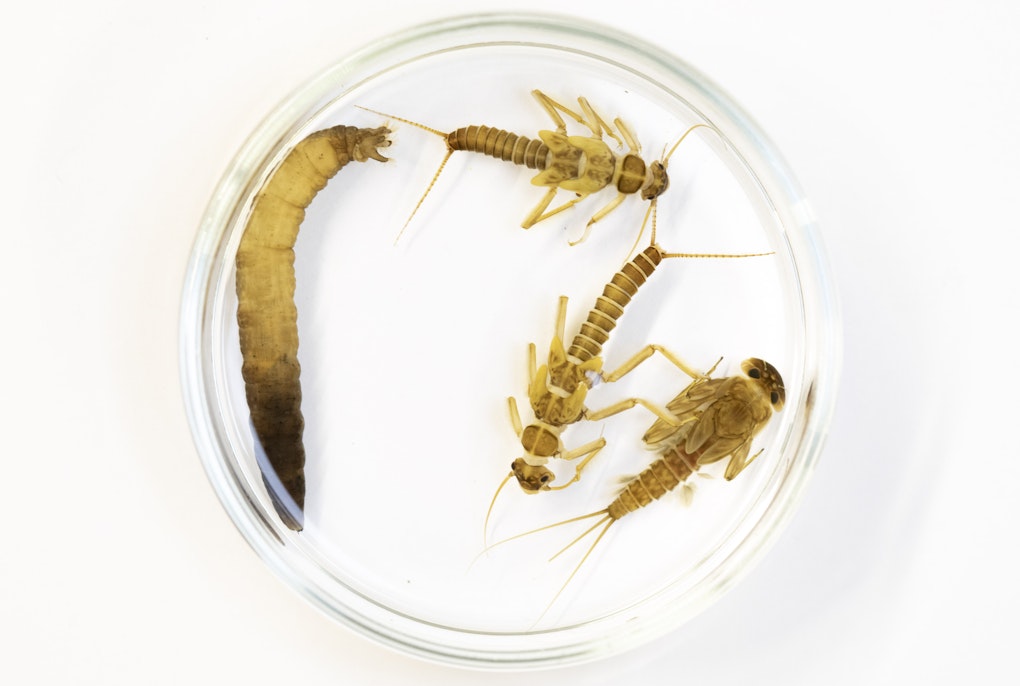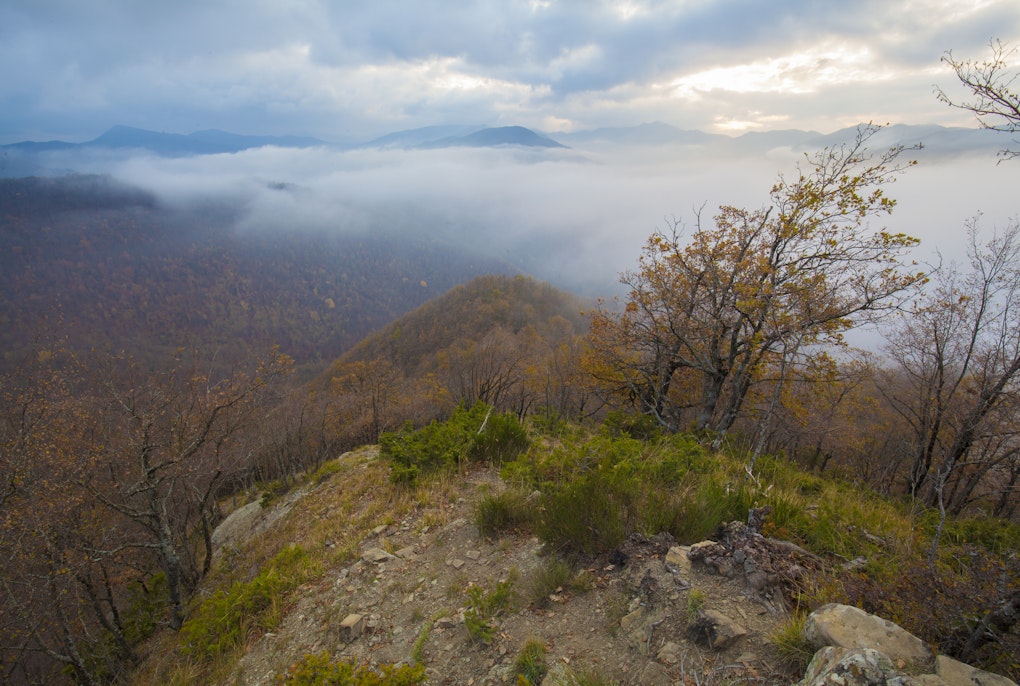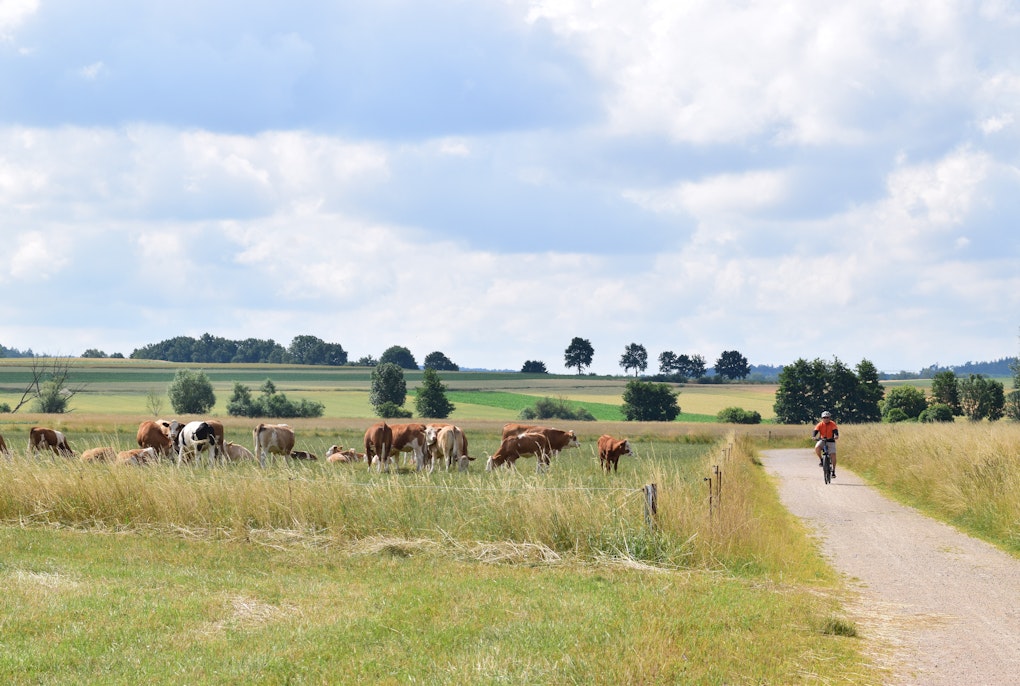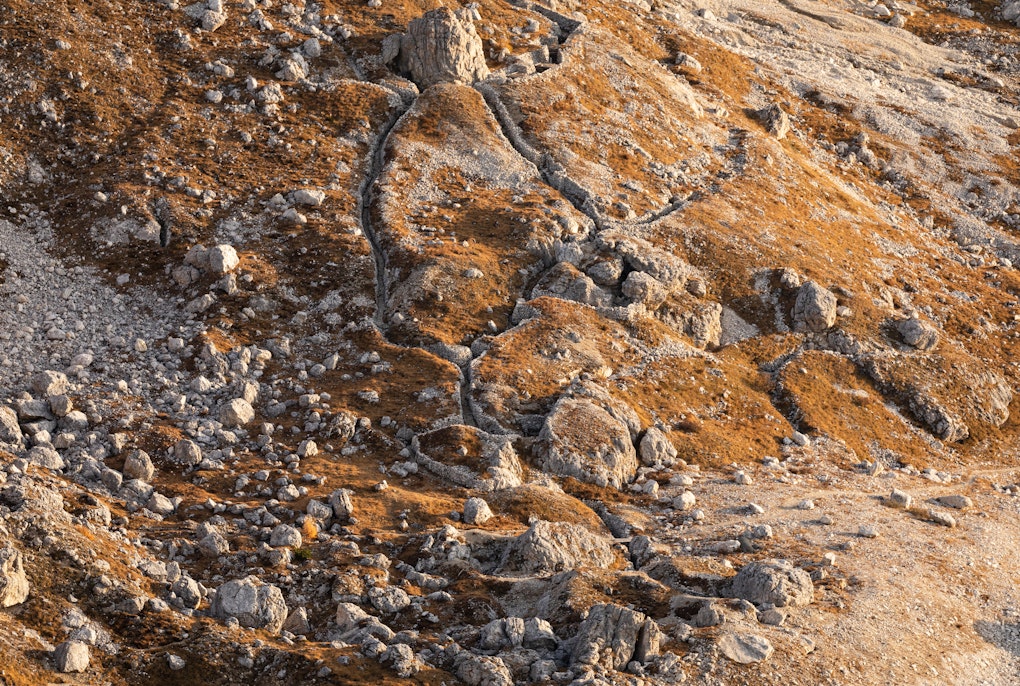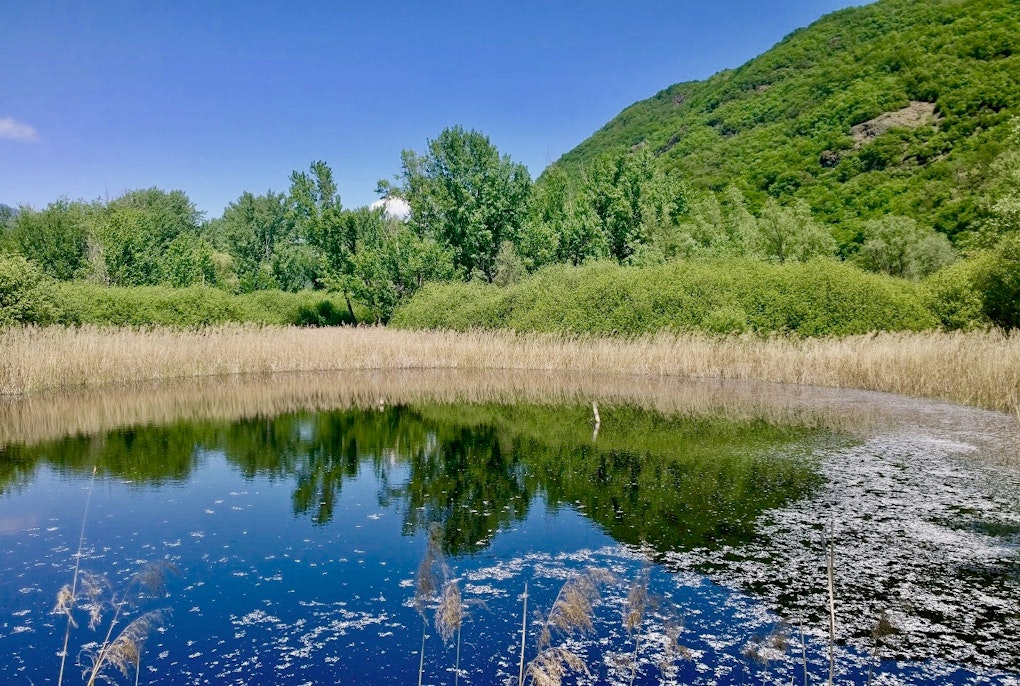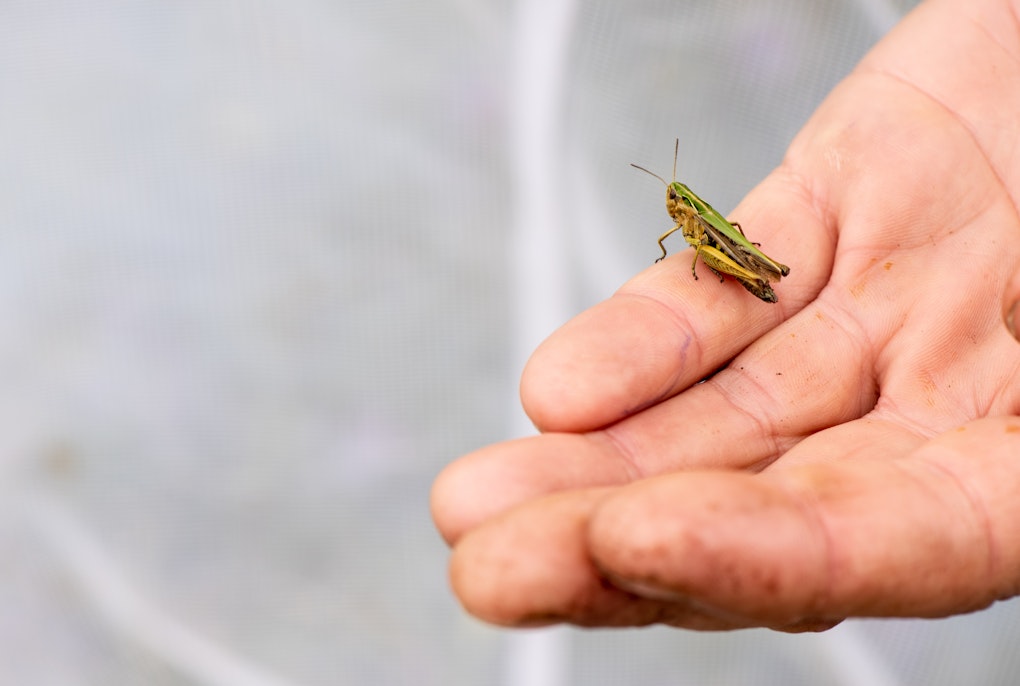magazine_ Article
The Trojan horse of the butterflies
What makes the Black-spotted Large Blue butterfly so special and so endangered?
Phengaris arion’s behavioural ecology is unique: by allowing its larvae to be carried away by ants to their nests, the butterfly young can gorge on ant larvae ̶ albeit at the risk of becoming prey themselves. This intriguing life cycle fascinates our entomologist Elia Guariento, making the Black-spotted Large Blue one of his favorite butterflies. Although this infiltrator is rare and on the globally endangered list, Elia was able to document the species in certain South Tyrolean grasslands.
A super specialist with a spectacular resume
Believe it or not, ants are among the Black-spotted Large Blue’s worst predators. Nevertheless, ants - or more precisely, certain types of ants, feed and protect the butterfly larvae. Mature, Black-spotted Large Blue butterflies only lay their eggs on a specific plant which also happens to be our particular ant’s food source. Once hatched, the young caterpillars eat like other common larval-stage Lepidoptera on plants. After this stage of their life cycle, the caterpillars then shed their outer “skin” and change their appearance, transforming their bodies so they no longer resemble caterpillars but rather…maggots.
And if you thought that was strange, wait for what’s next. The maggoty-looking butterfly larvae then drop to the ground and wait for the arrival of their enemy! In doing so, they run some risks: being eaten by other ants, birds and other predators or simply starving to death unnoticed. However, if the “right” ant comes along ̶ only two species fall into this category: the saber-thorned knot ant and the wet turf knot ant ̶ and finds a larva, it doesn't attack or eat the grub but gives it a "feel", and in the best case, adopts it. Why, you may ask. It’s because the larvae not only look deceptively like ant larvae ̶ they can curl and inflate their maggot-shaped bodies to resemble them ̶ they also act like them too, making the same sounds and using their scent glands to secrete smells that are very attractive to the ants. In other words, they camouflage themselves chemically.
The unsuspecting ants then carry the larva into their nests placing it with their own brood. If the butterfly larva has made it this far, it is set. The ants feed the imposters with sugar water who can also eat up to 600 ant larvae during their stay in the enemy’s brood chambers. As pupae – the stage between larva and adult̶ they are still chemically masked to the ants since they have acquired the colony specific odor. However, the whole endeavor is rife with perils. Caterpillars can perish in the ant nest, either because they are attacked by "scent-immune" workers, or because they plunder the ant nest until it is empty ̶ destroying their food supply. And, once the larva has undergone its metamorphosis and emerges from its cocoon, the deception can no longer be maintained: the newly transformed butterfly must flee the ant nest as quickly as possible. Only when it reaches the earth's surface does it stretch and dry its wings. It then flies off to mate and again the females lay their eggs on the right food plant: the fascinating life cycle begins anew.
An extremely endangered trickster
"Among blue butterflies, the Black-spotted Large Blue is one of the largest. The fact that it is such a trickster makes it the most exciting of the butterflies for me," says Elia Guariento, an entomologist at Eurac Research. "It is such a highly specialized species: needing just the right food plant - thyme or oregano - and just the right ant species - the saber-thorned knot ant or the wet turf knot ant - to complete its life cycle," Guariento adds. "Unlike, the widespread Small White or Small Tortoiseshell butterflies which fly for miles to access new habitats, the Black-spotted Large Blue spends its entire life in a limited area, where every condition has to be just right. That makes it very vulnerable as a species." Despite its rarity ̶ the Black-spotted Large Blue is on the global list of endangered species - Guariento has found it in meadows and pastures in South Tyrol. "In the past, extensive pastures and meadows were the norm and as such, the butterfly's particular way of life was not so far-fetched; on the contrary, the larva had the advantage of being fed and protected by the ants and therefore were less likely to be eaten," Guariento says. These days however, extensive meadows and pastures are increasingly rare habitats, and their preservation is particularly important, underlines Guariento: "What you do to preserve the landscape is not only good for the butterfly but for the entire ecosystem and everything related to it. It’s also ultimately the basis of our life and economy."

Butterfly communities in South Tyrol
The paper “From diverse to simple: butterfly communities erode from extensive grasslands to intensively used farmland and urban areas”
Although the Biodiversity Monitoring South Tyrol survey revealed a high diversity of butterfly species in extensive grasslands and pastures, it is precisely this habitat where endangered species and species in need of special protection exist. Vineyards, intensively farmed meadows, agricultural fields as well as urban habitats and apple orchards were also investigated. The data revealed species diversity is decreasing, with butterflies faring worst in apple orchards. With this in mind, the research team emphasizes the importance of existing subsidies for agriculture schemes that regulate management in encouraging biodiversity and the maintenance of extensive meadows. The team also suggest these initiatives should also be extended to pastures. Areas at lower elevations should also be given special consideration since grasslands, especially extensive ones are particularly rare and even more highly threatened when they are lower. Conclusion: According to the study, intensively used areas have little merit in terms of butterfly conservation. Improving these areas with hedges or flowering strips would be beneficial but cannot replace extensive grassland conservation.
The study reflects the data collected on different land use across South Tyrol over 3 years. During this time, a total of 93 sites were surveyed in which 5,513 individual butterflies and 100 different species were found. The large amount of data allows the comparison and mapping of which butterfly species occur and how land use affects species diversity at certain sites. This information can also be used as part of a larger study of Europe as a whole.
This information was taken from the paper "From diverse to simple: butterfly communities erode from extensive grasslands to intensively used farmland and urban areas". Link: https://doi.org/10.1007/s10531-022-02498-3

Biodiversity Monitoring South Tyrol
Since 2019, the Biodiversity Monitoring South Tyrol project has been carried out by Eurac Research in collaboration with the South Tyrol Museum of Nature as well as the regional departments of Agriculture, Nature, Landscape and Spatial Development, and is financed by the province of Bolzano/Bozen. Under the aegis of the project, a variety of widely distributed habitats and areas of diverse land use in South Tyrol are being investigated: forests, wetland habitats, settlement areas, alpine habitats, flowing bodies of water, fields, and permanent crops, as well as meadows and pastures. Over a period of 5 years, 360 terrestrial sites are being surveyed in addition to and 120 stream sites being investigated over a period of 4 years. Following this, the survey cycle will be repeated to determine changes and trends. The long-term project not only serves as a basic research field, it is also intended to provide the basis for scientific decisions for agriculture, environmental protection and regional planning.
